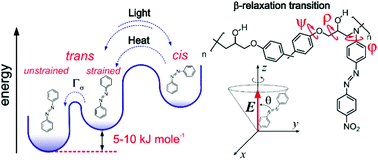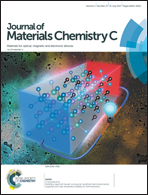Effect of secondary relaxation transitions on photo-induced anisotropy in glassy azobenzene-functionalized polymers
Abstract
We propose a physical mechanism for the photo-induced orientation alignment of azo-dyes incorporated in polymers at temperatures far below the glass transition temperature. Using polarized FT-IR spectroscopy, we show that optical dichroism undergoes an observable change at the β-relaxation transition of the azo-polymer when the mobility of the short backbone fragments is increased. We explain this effect using temperature-dependent local strains that occur within the polymer backbones in a glassy state. These strains underlie the enhanced thermal relaxation that drives the orientation kinetics.



 Please wait while we load your content...
Please wait while we load your content...